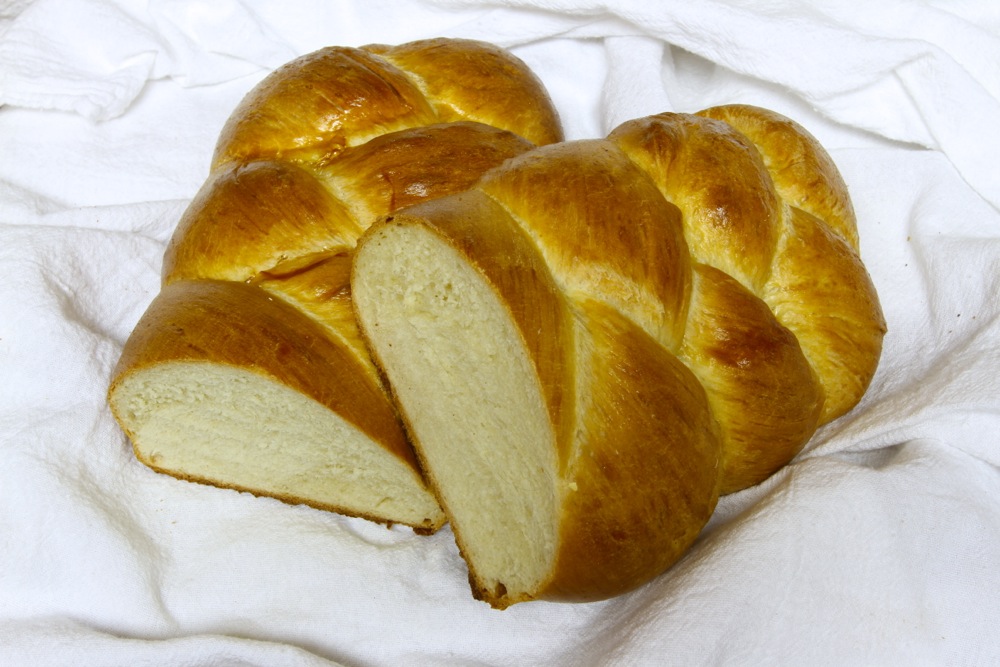Challah (also ḥallah plural: challot/ḥalloth/khallos) (Hebrew: חלה) is a special Jewish braided bread eaten on Sabbath and holidays.
The leftovers are terrific for making french toast, and I often make this bread specifically for that purpose.
My mom used to make this every week when I was growing up, and I have very fond memories of working with her in the kitchen on Fridays to make this (not sure how much I was really helping, of course).
This version of the recipe actually comes from Cuisinart, included in the manual for my food processor. I was actually surprised by how good it was, and how closely it matches what I remember from my childhood. The Cuisinart recipe book is available online here, under product manuals (I have the Prep-9): http://www.cuisinart.com/share/pdf/manuals/dlc-2009chb.pdf
The instructions assume you have a food processor with a dough blade. For the record, I love the Cuisinart Prep-9 and would recommend it to anyone looking for a good food processor.
Makes a 1 ½ pound loaf.
Ingredients
- 3 Tbsp granulated sugar, divided
- 1 package active dry yeast (about 2 1/4 tsp)
- 1/4 cup warm water (105-115 degrees F)
- 3 1/4 cups unbleached, all-purpose flour
- 1 1/2 tsp table salt
- 1/2 cup cold water
- 1/3 cup unsalted butter, melted
- 1 large egg
- egg glaze (1 large egg and 1 Tbsp water)
- vegetable oil (or, my preference, olive oil) cooking spray
In a 2-cup liquid measure, dissolve 2 teaspoons sugar and yeast in warm water. Let stand until foamy, about 5 minutes.
Insert the dough blade in the work bowl and add flour, remaining sugar and salt. Pulse to combine, about 2 to 3 times.
Add cold water, melted butter and egg to yeast mixture. With machine running, add liquid through small feed tube in a steady stream as fast as the flour absorbs it. Once dough forms a ball continue processing for 45 seconds to knead dough. Place dough in a floured plastic food storage bag and seal. Let rise in a warm place until doubled in size, about 1 to 1 ½ hours.
Place dough on a lightly floured surface and punch down. Divide dough into 3 equal pieces. Use your hands to roll each piece into a cylinder about 1 ½ x 14 inches. Place the cylinders side by side on a baking sheet coated with vegetable oil cooking spray. Braid loosely from one end. Gently pull and taper each end to a point, then pinch and tuck under loaf. Cover with plastic wrap coated with vegetable oil cooking spray and let rise until doubled in size, about 45 minutes. Preheat oven to 375 degrees F for 15 minutes before baking.
Prepare egg glaze by combining egg with water; brush over braid. Bake in lower third of preheated oven for 20 minutes. Lower temperature to 350 degrees F and bake until loaf is browned and sounds hollow when tapped, about 10 minutes. Cool on wire rack.


